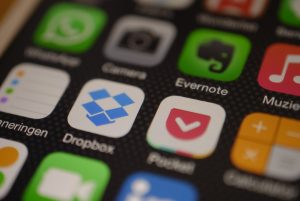Mobile apps bias
The phone/tablet device is a powerful computer but for tasks dedicated to it – phone calls, screen time, connectivity. For real hard core computational tasks the mobile devices are rarely used as such, although I was listening to one audio documentary about a fellow who was interested to harness to power of old phones in a server rack. I was rummaging about the same concept for Raspberry Pi or Beaglebone boards, but I doubt the efficiency of the power consumption versus computational power is enticing for real testing, especially when there are already Linux images for Pi/Beaglebone. I recognize the power of the modern phones (6/8 cores with wifi/gsm connectivity) but I tend to see them a little bit more as the next step from IoT boards.
If the mobile device is an evolving matrix of sensors with a screen, what is the future of the applications? I will discuss the trends I foresee in mobile applications based on basic requirements for a phone/tablet and the plethora of sensors coming in the market.At the moment a mobile device can substitute a computer for mundane tasks, which 80% of the population are using a computer for:
- sending/receiving emails/phone calls/messaging
- video/audio streaming
- recording/playing for audio/video streams
- some productivity tools, a substitute for Word/Excel/Power Point
- game consoles
For a large company the effort to ride the mobile wave (there are more phones than computers) is not that difficult. I might envision the future where the present computer is replaced by a “device” with a screen. Microsoft is pushing the Surface, Google did a brilliant job with Chrome but for totally different reasons. The power of the phone/tablet/small screen is derived from connectivity and less from the plethora of sensors augmenting data collected. Leaving games aside what is the future of the phone/tablet?
Future mobile apps based on hardware changes
I cannot answer without peeking in two directions, the current patent applications from the phone leaders of the industry – Samsung, Apple, Google, microchip manufacturers and the incremental innovations pushed by the software packages in adapting to the current limitations of the phone.
- 3D sensors, sophisticated lenses, enhanced images and processors are one the directions we are seeing the phones going to.
- Integration with other communication devices is another area of development.
- Better screens or technology for screens as they are the most battery consumers.
- Battery improvements for fast charging, battery life or battery charging via different conduits.
- The software applications of tomorrow have to fill-up the gaps on doing more than going back-and-forth between back-ends and phones.
IoT possible channel for mobile apps
I will touch in this post the second line as it is very much where our efforts are directed. We emphasized in previous posts that currently the sensors present in the phones are not really used by the applications in Google Play.
What we did not discussed is how many other sensors which are totally independent on the phone/tablets can be integrated for smart use and seamless innovation in today B2B/B2C environment.
I will give a few examples where smart mini-appliances could open and be integrated into the huge market of mobile phones.
- weather stations
- pollution data collectors
- visibility data stations
- earth-quake data stations
- parking lots with intelligent monitoring
I will explain what do I mean by opening the phone to the IoT mini-data marts. A weather station is a mini-engine of sensors data which can deliver statistical information based on the history of a specific location. The prediction factor can be massaged by third party software and delivered locally to be consumed by interested subscribers. The “virtual-life” of the station is comprised of several stages:
- collect data through many sensors
- send data for interpretation and get back potential scenarios (or process data based on detected patterns)
- allow subscribers (mobile devices) to get current data or predictions. Based on learning algorithms and “on-place” history data show more than the next possible weather for the next 7/14 days. And here comes the “local” factor which makes the IoT important.
IoT integration in mobile apps
Instead of having a central point of data collection and delivery, you may have a local data provider even when GPRS/GSM connectivity is not available. The big difference is opening small data-marts in remote areas or for users who are interested in slices/local data information. At this moment, if you want to follow this path everyone is re-inventing the wheel (in IoT) by providing web servers, SNMP packages, etc.. The crowd of mobile devices should be served in a simple universal manner.
